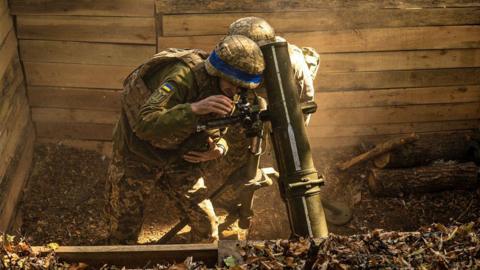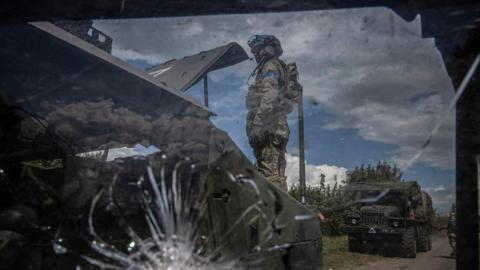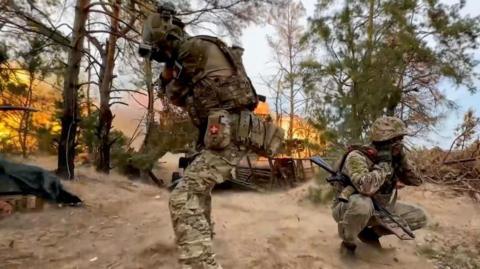Veterans of previous doomed operations see parallels in what’s happening in Kursk.
From October 2023 until July this year, Ukrainian forces attempted to hold onto a tiny bridgehead at Krynky, on the left bank of the Dnipro River, some 25 miles (40km) upstream from the liberated city of Kherson.
The bridgehead, initially intended as a possible springboard for advances further into Russian-held territory in southern Ukraine, was eventually lost.
The operation was hugely costly. As many as 1,000 Ukrainian soldiers are thought to have been killed or gone missing.
Some came to see it as a stunt, designed to distract attention from the lack of progress elsewhere.
They fear something similar might be happening in Kursk.
“Good idea but bad implementation,” says Myroslav, a marine officer who served in Krynky and is now in Kursk.
“Media effect, but no military result.”
Military analysts insist that for all the hardship, the Kursk campaign continues to play an important role.
“It’s the only area where we maintain the initiative,” Serhiy Kuzan, of the Ukrainian Security and Cooperation Centre, told me.
He acknowledged that Ukrainian forces were experiencing “incredibly difficult conditions” in Kursk, but said Russia was devoting vast resources to ejecting them - resources which it would prefer to be using elsewhere.
“The longer we can hold this Kursk front - with adequate equipment, artillery, Himars and of course long-range weapons to strike their rear - the better,” he said.
In Kyiv, the senior commanders stand by the Kursk operation, arguing that it’s still reaping military and political rewards.
"This situation annoys Putin,” one said recently, on condition of anonymity. “He is suffering heavy losses there."
As for how long Ukrainian troops would be able to hold out in Kursk, the answer was straightforward.
"As long as it is feasible from the military point of view."
Additional reporting by Anastasiia Levchenko


